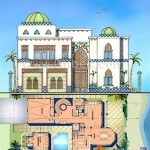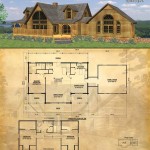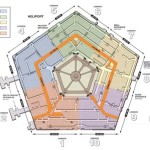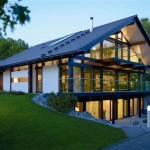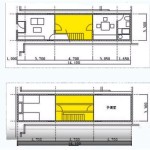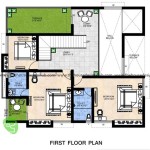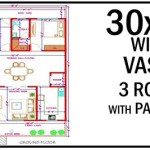Small Santa Fe Style House Plans: Embracing Southwest Charm in Compact Spaces
Santa Fe style architecture, characterized by its adobe construction, soft contours, and connection to the landscape, offers a unique and inviting aesthetic. This style, deeply rooted in the history and culture of the American Southwest, translates surprisingly well into smaller house plans. Small Santa Fe style homes provide the opportunity to capture the essence of this iconic design in a manageable and affordable footprint. This article explores the key characteristics of Santa Fe style architecture, how it adapts to smaller spaces, and important considerations when selecting a small Santa Fe style house plan.
The enduring appeal of Santa Fe style stems from its harmonious blend of Spanish, Pueblo, and Territorial influences. Traditional building materials like adobe, a mixture of earth, water, and straw, contribute to the style's distinctive look and natural insulation properties. These homes are designed to blend seamlessly with the surrounding desert environment, creating a sense of tranquility and connection to nature.
Key Characteristics of Santa Fe Style Architecture
Several defining features distinguish Santa Fe style architecture. Understanding these characteristics is crucial when considering a small Santa Fe style house plan to ensure the home truly embodies the spirit of the design.
First, the use of adobe or adobe-looking materials is paramount. While true adobe construction can be costly and require specialized expertise, modern building techniques allow for the creation of walls that mimic the appearance of adobe. Stucco, applied with a textured finish, is a common and effective alternative. The color palette typically ranges from earthy browns and beiges to warm whites, reflecting the natural tones of the desert landscape.
Secondly, flat or gently sloping roofs are another defining element. These roofs, often with exposed wooden beams called vigas, contribute to the horizontal lines and low profile of Santa Fe style homes. Parapets, short walls extending above the roofline, are frequently incorporated, adding visual interest and often featuring canales, or waterspouts, to direct rainwater away from the walls.
Finally, the incorporation of natural materials and handcrafted details is essential. Wood is used extensively for doors, windows, and accents, often with a rustic or aged finish. Hand-carved details, such as corbels and posts, add a touch of authenticity and craftsmanship. The integration of elements like kiva fireplaces, with their distinctive rounded shape, further enhances the Santa Fe aesthetic. Windows are often deeply set into the thick walls, providing shade and creating a sense of privacy.
Adapting Santa Fe Style to Small House Plans
Designing a small Santa Fe style house requires careful planning and a focus on maximizing space while preserving the architectural integrity of the style. The challenge lies in incorporating the key characteristics of the style within a smaller footprint without sacrificing functionality or creating a cramped feeling. This often involves prioritizing open floor plans, strategic window placement, and the use of multi-functional spaces.
The open floor plan is particularly well-suited to small Santa Fe style homes. By eliminating walls between living areas, such as the living room, dining room, and kitchen, a sense of spaciousness can be achieved. This also allows for better natural light penetration and improved airflow throughout the home. The integration of outdoor living spaces, such as patios or courtyards, further extends the usable living area and connects the home to the surrounding environment.
Strategic window placement is crucial for optimizing natural light and ventilation. Windows should be positioned to capture sunlight during the day and provide cross-ventilation to keep the home cool. Deeply set windows, characteristic of Santa Fe style, can also help to reduce heat gain during the hot summer months. Skylights can be used to bring additional light into interior spaces, especially in areas where windows are not practical.
The use of multi-functional spaces is another effective way to maximize space in a small Santa Fe style home. For example, a guest bedroom could also serve as a home office or a hobby room. Built-in storage, such as bookshelves or cabinets, can help to declutter the space and create a more organized and functional environment. The use of furniture that serves multiple purposes, such as a sofa bed or a dining table that can be expanded, can also help to save space.
Important Considerations When Selecting a Small Santa Fe Style House Plan
Choosing the right small Santa Fe style house plan involves careful consideration of several factors, including lifestyle, budget, and site conditions. A well-chosen plan will not only meet the homeowner's needs but also capture the essence of the Santa Fe style and create a comfortable and inviting living space.
Firstly, consider the homeowner’s lifestyle and needs. How many bedrooms and bathrooms are required? Is a home office necessary? How much storage space is needed? What are the homeowner’s preferences for indoor and outdoor living? Answering these questions will help to narrow down the options and identify a plan that best suits the homeowner’s individual needs.
Secondly, establish a realistic budget. Building a home, even a small one, can be a significant investment. It is important to factor in all costs, including the cost of the land, the cost of the house plan, the cost of materials, and the cost of labor. It is also advisable to set aside a contingency fund to cover unexpected expenses. Consider the long-term costs associated with owning a Santa Fe style home, such as maintenance and repairs. Adobe or stucco exteriors may require periodic maintenance to prevent cracking and water damage. Roofing materials, especially traditional flat roofs, may also require regular inspection and repair.
Thirdly, assess the site conditions. The topography of the land, the climate, and the availability of utilities should all be taken into account. A sloped lot may require significant excavation or grading, which can add to the cost of construction. The climate will influence the design of the home, including the orientation of the windows and the type of insulation used. The availability of utilities, such as water, sewer, and electricity, will also affect the cost and feasibility of building a home on a particular site. Choose a plan that is well-suited to the site conditions and that takes advantage of the natural features of the land.
Furthermore, pay attention to energy efficiency. Santa Fe style homes, with their thick walls and deep-set windows, can be naturally energy-efficient. However, it is important to incorporate additional energy-saving features to minimize energy consumption and reduce utility bills. These features may include high-performance windows, energy-efficient appliances, and solar panels. Consider using sustainable building materials, such as recycled content materials or locally sourced materials, to reduce the environmental impact of the home. Incorporating passive solar design principles, such as orienting the home to maximize solar gain in the winter and minimize solar gain in the summer, can further enhance energy efficiency.
Finally, consider the interior design. While the exterior of a Santa Fe style home evokes a sense of history and tradition, the interior can be designed to reflect the homeowner's personal style. Common interior design elements include exposed wooden beams, hand-painted tiles, and rustic furniture. The color palette typically includes earthy tones, such as browns, beiges, and oranges, as well as accents of turquoise and red. Consider incorporating native American artwork or crafts to add a touch of authenticity to the interior. The goal is to create a warm and inviting space that complements the architectural style of the home.
In conclusion, small Santa Fe style house plans offer a unique opportunity to embrace the charm and character of Southwestern architecture in a compact and manageable space. By carefully considering the key characteristics of the style, adapting it to the constraints of a smaller footprint, and taking into account lifestyle, budget, and site conditions, homeowners can create a beautiful and functional home that reflects their personal style and connects them to the rich cultural heritage of the region.

50 Santa Fe House Plans Ideas Home Southwest

Santa Fe Home Plans 1000 House Design Spanish Style Homes

Cervantes Santa Fe Style Home Courtyard House Plans Layout U Shaped

House Plan 94423 Southwest Style With 1583 Sq Ft 3 Bed Bath

Santa Fe Style Home With Walkout Floor Plan Evstudio

Santa Fe Spanish Ranch Home Style House Plans Homes

House Plan 69773 Southwest Style With 2431 Sq Ft 3 Bed Bath

Plan 90211 Southwest Style With 3 Bed Bath Car Garage

Southwest Style House Plans Floor Designs Houseplans Com

Santa Fe Style Home With Walkout Floor Plan Evstudio

